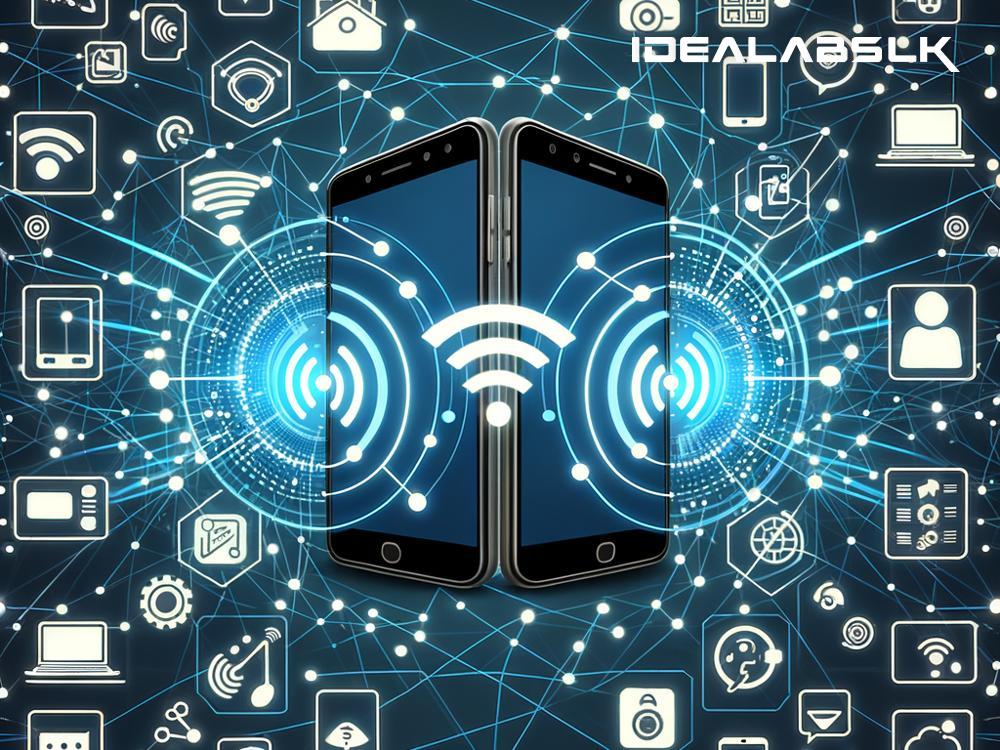Unlocking Seamless Connection: How AI is Transforming Device Pairing in Multi-Device Ecosystems
In the digital world we live in today, our lives are intertwined with a myriad of devices - smartphones, laptops, smartwatches, and IoT (Internet of Things) gadgets, to name a few. Each serves a unique purpose and ideally works in harmony with the others to create a seamless user experience. However, the process of getting these devices to communicate can often feel like trying to piece together a puzzle without the picture on the box. This is where Artificial Intelligence (AI) steps in, transforming the complex process of device pairing into a smooth, almost magical experience. Let's dive into how AI automates device pairing in multi-device ecosystems, making our digital lives more integrated and less complicated.
The Challenge: Navigating the Multi-Device Maze
Picturing a typical smart home setup can help us grasp the challenge at hand. You might have a smart TV, a couple of smartphones, a laptop, smart speakers, and perhaps a few smart bulbs or security cameras. Getting these devices to connect and communicate efficiently can be a daunting task. Traditional pairing methods often require manual input, like entering codes or navigating through complex menus, which can be time-consuming and, frankly, a bit frustrating.
The Hero: AI to the Rescue
Enter AI, our digital hero, designed to make our interactions with technology not only easier but more intuitive. AI in device pairing works under the hood, employing algorithms that enable devices to recognize each other, authenticate, and establish a connection automatically. Imagine walking into a room, and your smartphone immediately connects to your smart speakers, offering to play your favorite playlist without you having to lift a finger. That's the power of AI at work.
The Magic Behind the Scenes
So, how does AI automate the device pairing process? It all starts with smart algorithms that analyze various factors such as device types, user habits, location data, and security protocols. Here’s a simplified breakdown:
-
Detection and Recognition: AI helps devices detect each other's presence. It goes beyond mere proximity, allowing devices to understand what type of devices they are interacting with.
-
Secure Connection: Security is paramount in digital interactions. AI algorithms manage encryption keys and authentication processes behind the scenes, ensuring that the connection between devices is secure and protected from unauthorized access.
-
User Preferences and Habits: AI learns from your behavior and preferences. It knows which devices you prefer to pair for specific tasks and automates these preferences over time, personalizing your experience.
-
Contextual Awareness: AI empowers devices with contextual awareness. This means your devices understand the context in which they are being used - for instance, pairing your fitness tracker with your smartphone during your morning jog, but with your smart TV when you're ready for a guided workout in the living room.
Real-World Applications: Bringing Theory to Life
The benefits of AI-facilitated device pairing are vast and span across various sectors - from enhancing personal entertainment and home automation to streamlining operations in industrial settings. Here are a few examples:
-
Smart Homes: As mentioned earlier, AI simplifies the creation of a harmonious smart home ecosystem, where all devices work together seamlessly, enhancing comfort and convenience.
-
Healthcare: In hospitals, AI can help pair wearable devices with patient monitoring systems, ensuring that critical health data is accurately captured and shared with healthcare professionals in real time.
-
Automotive: In connected cars, AI can pair your vehicle with your smartphone or other wearable devices, personalizing your driving experience by adjusting settings such as seat position, temperature, and entertainment options based on your preferences.
The Future is Connected
As we edge further into the future, the role of AI in automating device pairing and streamlining the interaction between the myriad of devices in our ecosystem will only grow. The beauty of AI in this context lies in its ability to learn and adapt, continuously improving the way our devices connect and interact.
The ultimate goal? To create a world where technology truly serves us, seamlessly integrating into our lives, enhancing our experiences, and freeing us to focus more on the moments that matter. With AI leading the charge in automating device pairing, we're well on our way to that future.
So, the next time your devices magically sync up, know that there's a sophisticated AI working tirelessly behind the scenes, making your digital life a little less complicated and a lot more connected.

